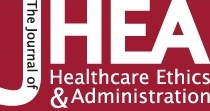Back Issue: Vol.10 No.3 (Fall 2024)
ISSN 2474-2309
Research Ethics
- Akshara Reghunath K, MBE.
Address correspondence to: Akshara Reghunath K. Masters in Bioethics (MBE). ICREP, CUSAT, KOCHI. Ernakulam, Kerala. Email: aksharareghunath1999@gmail.com
Pages: 1-16
Robotic surgery has come to light as an innovative advance in medicine that has drastically changed the face of healthcare. Patients can benefit from this technology’s unparalleled precision, control, and minimally invasive choices to its integration of sophisticated robotics, artificial intelligence, and accurate surgical methods. With the use of robotic devices, surgeons may now conduct difficult procedures with increased accuracy, less trauma, and quicker recovery times. Shorter hospital stays and reduced complication rates are the results of this better patient outcome. The article examines the development of robotic surgery, its present uses in a range of medical specialties, and its effects on patient care and the larger healthcare system. It also addresses the difficulties and prospects for robotic surgery in the future, particularly how it might be integrated with cutting-edge innovations like telemedicine and machine learning, which have the potential to completely transform the surgical field. This analysis highlights how robotic surgery can change healthcare delivery and improve patient outcomes. It also shows how robotic surgery has the potential to become a new norm in modern medicine.
narrative review
- Daniel C. Eisner, DMSc, MHA, PA-C, CPHQ
Address correspondence to: Daniel C. Eisner, DMSc, MHA, PA-C, CPHQ. E-mail: email.eisner@gmail.com
Pages: 17-25
OBJECTIVE: This narrative review explores concerns and potential solutions for improving the quality of synchronous telemedicine visits for high utilizers like primary care, particularly after the COVID-19 pandemic. METHODS: A literature review identified studies published within the past 10 years focusing on telemedicine quality, primary care, and related aspects like liability, virtual exams, and patient safety. RESULTS: Despite the surge in popularity of telemedicine visits, concerns regarding their quality linger. These concerns encompass various aspects of the patient experience, administrative processes, and potential safety risks. Limitations in physical exam capabilities and the lack of readily available vital signs during telemedicine visits raise concerns about the accuracy of diagnoses. This is particularly true for situations requiring a more comprehensive physical assessment. Incomplete documentation due to abbreviated patient histories, missing physical exam findings, and the reliance on generic templates pose liability risks. This lack of thorough information makes it challenging to accurately capture the patient’s condition and raises concerns about the quality of care provided. Patients themselves have expressed concerns about accuracy of a virtual visit, thus raising questions about the effectiveness of telemedicine in building rapport and ensuring clear communication. From an administrative standpoint, fears of misdiagnosis due to the limitations of virtual exams, inconsistencies in insurance coverage for telemedicine services, and unclear reimbursement standards for thorough visits continue to pose challenges. These uncertainties create ambiguity and make it difficult for healthcare providers to fully embrace telemedicine as a viable option. Finally, although mirroring in-person visit protocols for patient safety is considered crucial, many organizations currently lack standardized measures to ensure safety throughout the entire telemedicine journey. This includes potential risks during scheduling, appointment execution, and post-visit follow-up, highlighting the need for more robust safety protocols specifically designed for the telemedicine setting. Addressing these concerns is essential for ensuring the quality and sustainability of telemedicine integration. CONCLUSION: While telemedicine offers significant benefits, improving quality is essential for its sustainable integration into primary care. Standardizing protocols, educating clinicians and patients, implementing comprehensive physical exam procedures, and ensuring patient safety throughout the visit are key areas for improvement. Continuous monitoring and data analysis are crucial for identifying and addressing weaknesses and ensuring quality telemedicine care.
